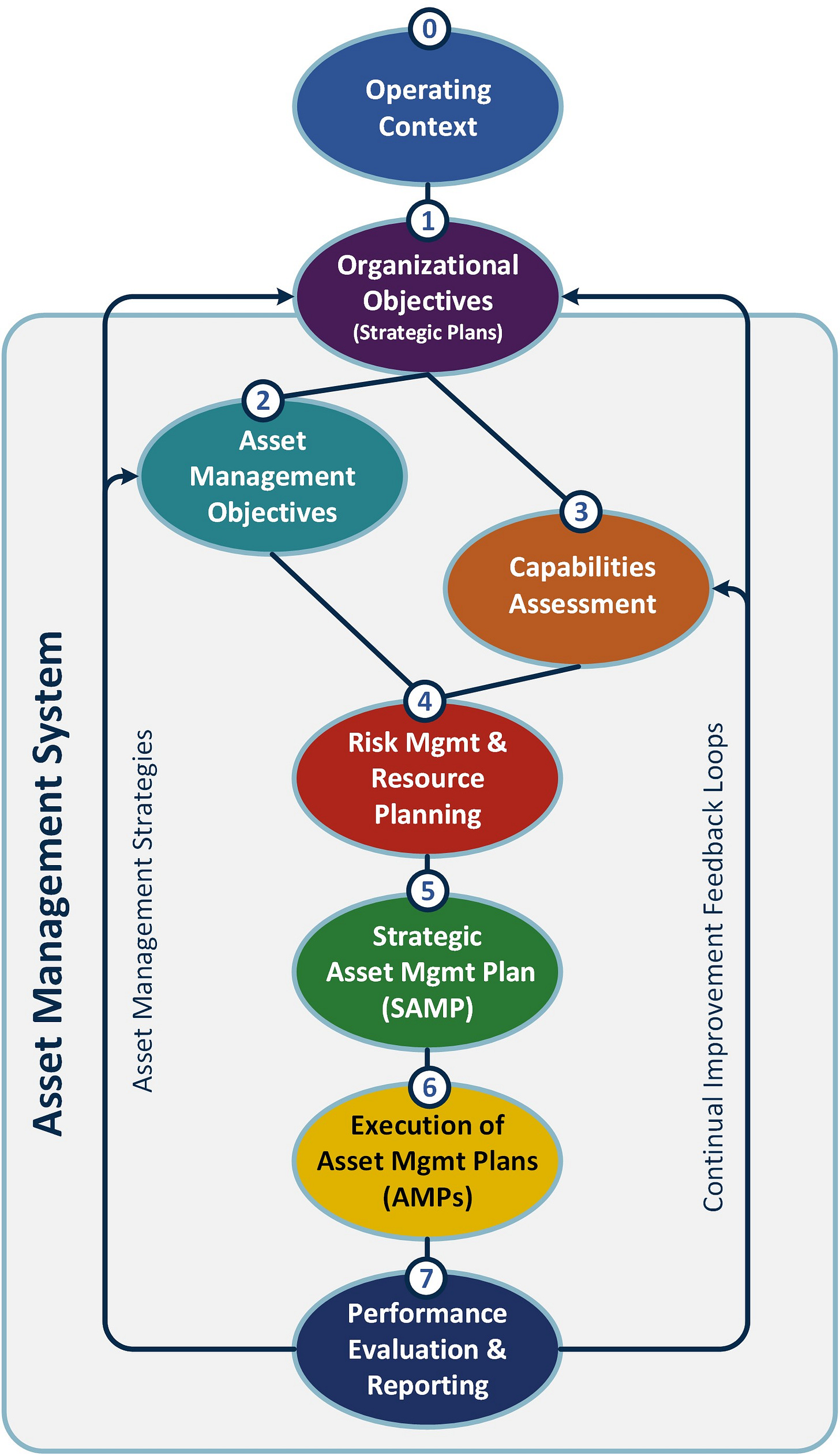Asset Management Strategy - Part 1: Strategy and Tactics
Two Part Series on Asset Management Strategy Development and Implementation
This Asset Management Framework (AMF) Journal entry begins a two-part series on Asset Management Strategy. Strategy is at the core of every successful management system and at the front of every effective policy or course of action. Strategy defines what the organization is aiming at. For these reasons, strategy is an essential part of Asset Management (AM) Framework implementation.
This two-part series will dissect how strategy is used to develop an organization’s asset management capabilities and then cover how these capabilities are applied through an AM Framework. The first part will cover development of strategy through the lens of an Asset Management System (AMS). This will distinguish the division of labor between strategy and tactics. The second part will build on this and cover the implementation of strategy through management system thinking. This will illuminate pathways that integrate strategy and the plans to achieve the organization’s strategic aims.
PART 1: TACTICS AND STRATEGY
Strategy and tactics have been studied for military affairs for eons. In the last century concepts of miliary strategy and tactics have been applied to business affairs. This is because development of strategy and tactics became a recognized way to get things done at scale. As the scope of business affairs increased so did the reason to develop strategy and tactics for it. This AMF Journal entry applies this thought continuum to the implementation of an AMS through the AM Framework shown below:
The Study of Tactics and Strategy
There is no better way to begin this discussion then to cite Sun Tzu’s wisdom on the topic:
“Strategy without tactics is the slowest route to victory. Tactics without strategy is the noise heard before defeat.”
This viewpoint makes clear that strategy and tactics are different, but related. Tactics in asset management can be simplified to the doctrine used to guide processes. Doctrine defines the way something is done, but not the steps on how to do it. Description of the steps on what to do is a process. Using the same logic, an organization’s asset management strategy can be seen as the doctrine used to guide policy. This leads to the question, where does this doctrine come from?
The International Organization for Standardization (ISO) in ISO 55000 defines a management system as a “set of interrelated or interacting elements of an organization to establish policies, and objectives, as well as processes to achieve those objectives”. The product of a management system is policy, objectives, and processes that are generated from a “set of interrelated or interacting elements”. It is strategy and tactics that organize these elements and generate the organization’s policy, objectives, and processes. In this context, ISO 55000 standards serve as the doctrine that establishes the strategy and tactics to implement asset management.
Coming back around to the Sun Tzu quote, the strategy that implements asset management policy, objectives, and processes is critical. To be successful, it must be known and robust. The degree and speed to which asset management is implemented is dependent on the tactics used that must be calibrated to the organization’s culture and needs. Simply, ISO 55000 terms, concepts and principles, and ISO 55001 requirements establish the doctrine to guide development of the strategy and tactics used to implement asset management.
Asset Management Doctrine
A simple definition for doctrine is that it is a set of beliefs. Doctrine is not directive; its application requires judgement. At a strategic level doctrine can be stated as principles and disciplines. At a tactical level doctrine is manifested through frameworks.
ISO 55000 makes clear that asset management does not focus on assets, but on the value that can be generated from assets and the management of assets. The resulting asset management doctrine orbits around the definition and means to generate value. The updated version of ISO 55000 states asset management has three principles titled: value, leadership, and alignment. It also states that asset management has three desired outcomes: assurance, adaptability, and sustainability. These provide a basis for asset management doctrine.
The missing element is discipline. The discipline for asset management is established through use of standards. ISO 55001 that defines requirements for an AMS fills this void. This standard is not directive regarding how asset management is to be implemented. How asset management is implemented is based on the judgement of the organization’s executive leadership. This perspective is advanced in the updated version of ISO 55001 that require asset management be implemented using an AM Framework.
Based on these points, the asset management doctrine used must be suited for the organization and its asset management intentions. The asset management doctrine should be stated in the organization’s approach to asset management. This leads to the need for strategy and tactics to do so.
Strategy and Tactics for the Organization’s Approach to Asset Management
The launch point for implementing disciplined asset management is an executive decision.





